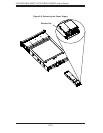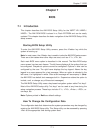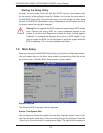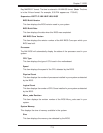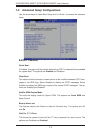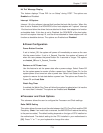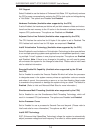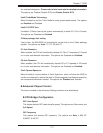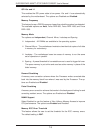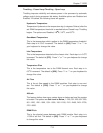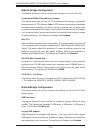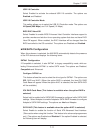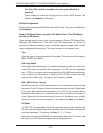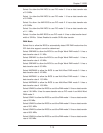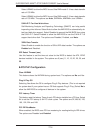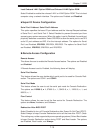
7-8
SUPERSERVER 6026TT-GTRF/GIBXRF/GIBQRF User's Manual
QPI L0s and L1
This enables the QPI power state to low power. L0s and L1 are automatically
selected by the motherboard. The options are Disabled and Enabled.
Memory Frequency
This feature forces a DDR3 frequency slower than what the system has detected.
The available options are Auto, Force DDR-800, Force DDR-1066, and Force
DDR-1333.
Memory Mode
The options are Independent, Channel Mirror, Lockstep and Sparing.
Independent - All DIMMs are available to the operating system.
•
Channel Mirror - The motherboard maintains two identical copies of all data •
in memory for redundancy.
Lockstep - The motherboard uses two areas of memory to run the same
•
set of operations in parallel.
Sparing - A preset threshold of correctable errors is used to trigger fail-over.
•
The spare memory is put online and used as active memory in place of the
failed memory.
Demand Scrubbing
A memory error-correction scheme where the Processor writes corrected data
back into the memory block from where it was read by the Processor. The op-
tions are Enabled and Disabled.
Patrol Scrubbing
A memory error-correction scheme that works in the background looking for and
correcting resident errors. The options are Enabled and Disabled.
NUMA Support
Select Enabled to use the feature of Non-Uniform Memory Access to improve
CPU performance. The options are Enabled and Disabled.
Memory ECC Error Threshold
This feature allows the user to set the threshold for the ECC memory errors.
The default setting is 2047.



